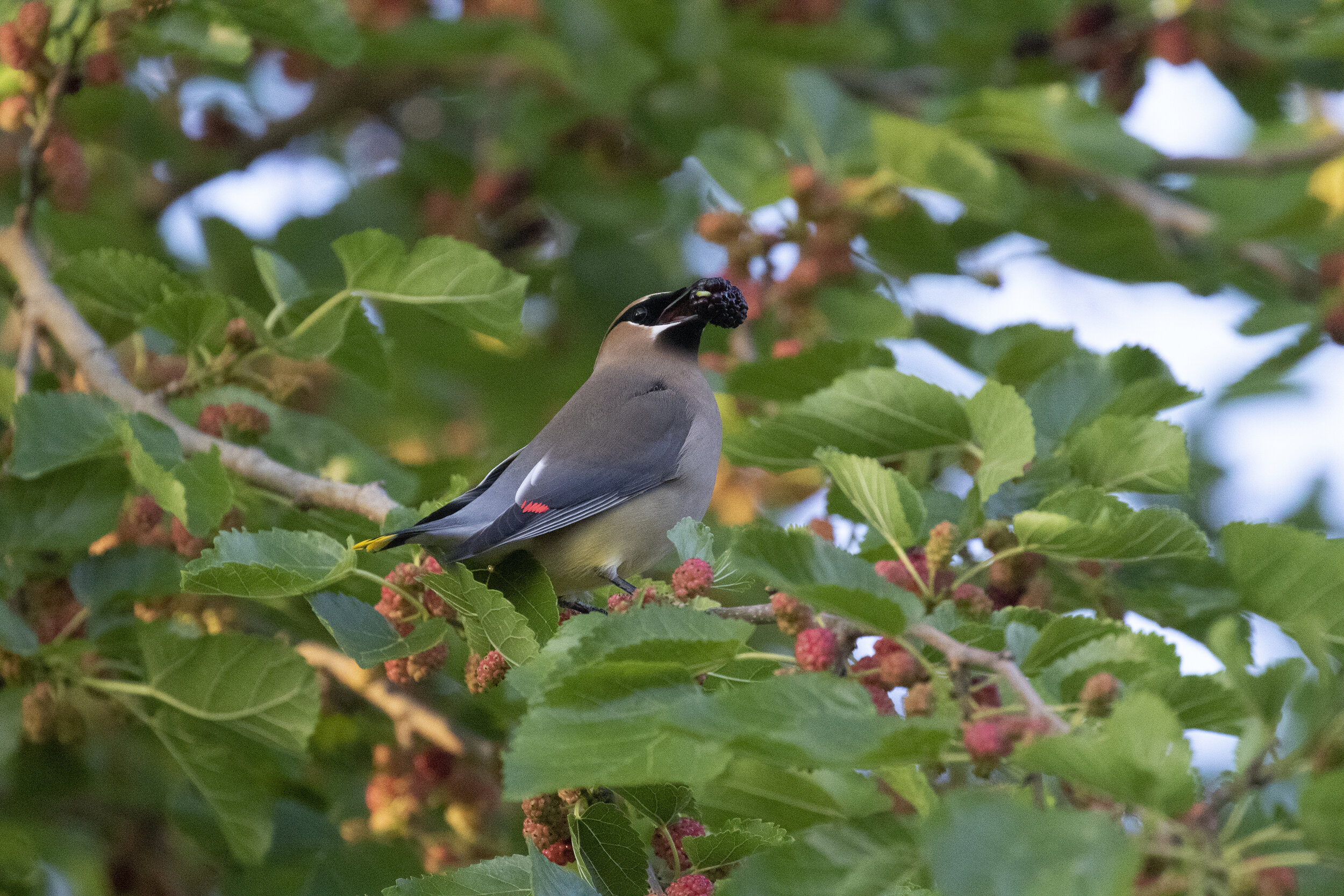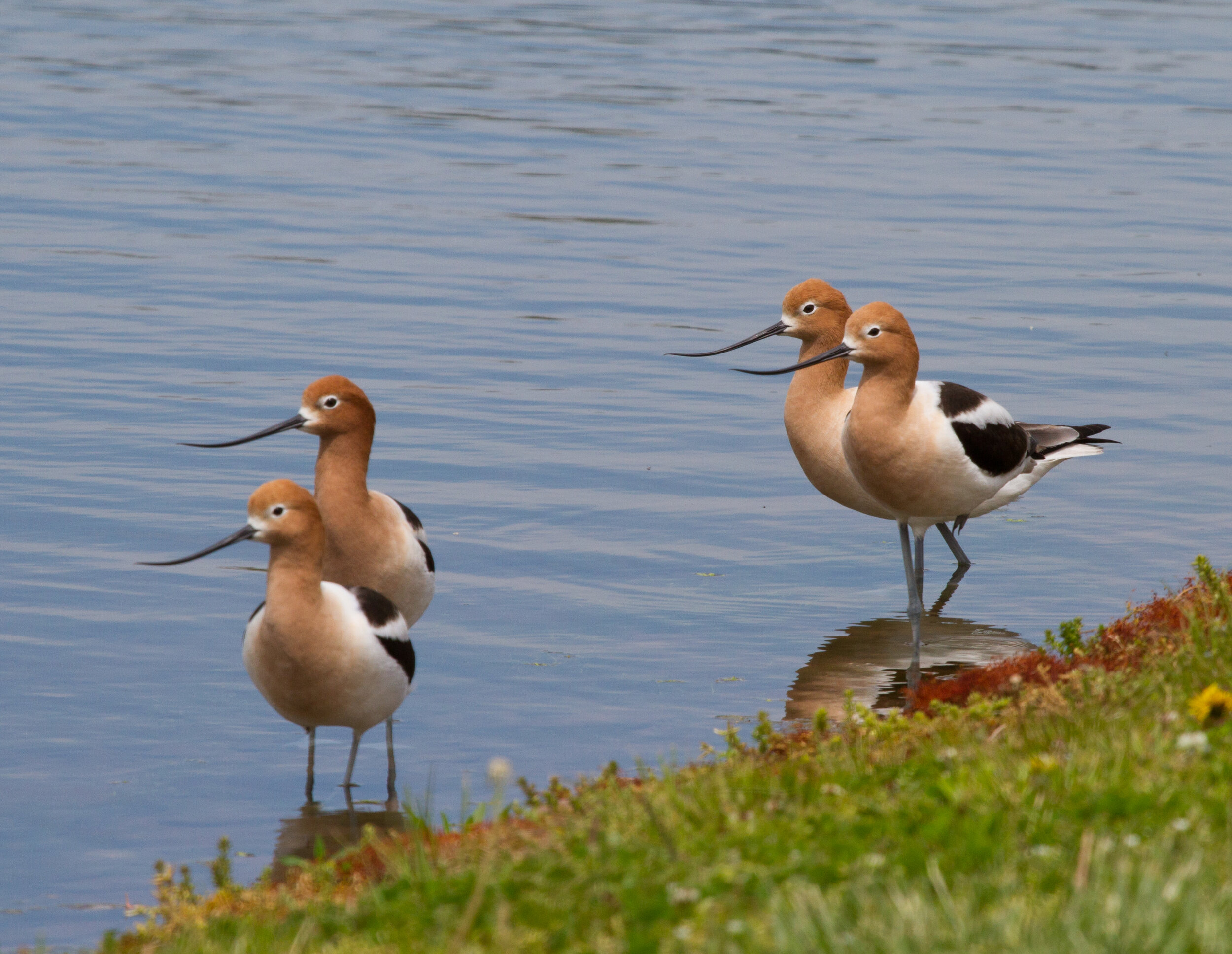
Submit a Report to VARCOM
Photo: Cedar Waxwing, Dixie Sommers
IMPORTANT NOTICE: The DOVES submission database is currently experiencing errors in receiving new submissions. You can still browse existing records. Please submit records via this Form. For inquiries or more information, please contact the VARCOM Secretary. Updates to the DOVES system are planned for the future.
VARCOM encourages anyone who finds a bird they believe merits documentation for Virginia’s permanent ornithological record to submit the details of that encounter for consideration.
Identifying new, rare, or seldom seen bird species is an exhilarating, personally rewarding experience. Formally documenting that encounter also has its rewards, although it can be complex and challenging, especially when sightings are brief and/or in less than ideal conditions. Bird records that are effectively documented accurately detail as many essential physical characteristics and behavior(s) of the bird (or birds) as possible to confirm the identification AND specifically account for the criteria used to differentiate that species from similar species. Often these key features and behaviors are captured by retrievable media (photos, videos, sound recordings). Such supporting evidence greatly enhances the quality of the documentation.
If you are unsure whether to document a bird you encounter, check first to see if it is on the VARCOM Review List. Depending on the species and its location, it may be a candidate for VARCOM review. If the species is really unusual, you should also check the Official State List to see if it has previously been documented in the state.
I already reported my bird to eBird. Do I still need to submit a report to VARCOM?
Maybe not! VARCOM has implemented an Expedited Review Procedure for certain eBird records that are supported by media-rich documentation and that have been “Confirmed” by an eBird Reviewer.
VARCOM members scan the eBird Rarities Alerts regularly. If they think an eBird record should be reviewed by the committee, they, or an eBird reviewer, will contact you to ask you to submit a report to VARCOM.
So how do I submit a report?
Go to VARCOM’s Database for Ornithological Verification and Submissions (DOVES). If you are a first time user, you will need to register by following the simple registration protocol. Once you are logged in, click on Submit and a Submission Form will load. Complete all of the fields as best you can. If you have photos, videos or audio recordings, there is a mechanism to attach any or all of those. It’s a good idea to periodically save your work by clicking the “Save as Draft” button at the bottom of the form. When you have finished your report and checked your work one last time, click on “Submit” at the bottom of the form. Once you have clicked this “Submit” you will not be able to change your report.
The DOVES System will automatically e-mail you an acknowledgement that your report has been received.
What if I forgot something I meant to include in my report? How can I add it?
As mentioned above, once you click on “Submit”, your report cannot be changed. It’s like dropping a letter in the mailbox. However, VARCOM does have a way to address this. Just send an e-mail with the changes you would like to make to the VARCOM Secretary and your changes will be added administratively before your submission is reviewed by the Committee.
If you have any other problems or questions.
Contact the VARCOM Secretary.
ALL records documentation submitted to VARCOM, regardless of the vetted outcome, become part of Virginia’s permanent ornithological record. All “Accepted” records will be posted to VARCOM’s publicly accessible Virginia Avian Records Archive.
Points to Include in Bird Documentation Reports
A. Identity
Common Name
Number of birds
Sex of the bird(s)-if this can be determined
Age of the bird(s)- if this can be determined
B. Observation Date(s)
Date(s) of observation-if the observation was over many days or weeks please list the first and last observation dates
C. Observation Location
Virginia county or city
Place name-such as a park, address, road intersection, etc. (GPS coordinates if known)
Habitat description (field, woods, water, plants, etc.)
D. Detailed description of the bird(s), including essential field marks
Describe as many of the following details about the bird(s) as possible:
Posture, size, shape, structure
Head shape, colors, facial patterns
Bill length, shape, color(s)
Eye color
Patterns around the eye e.g. as eye-ring, eye line etc.
Colors and patterns of nape, back and rump
Tail color(s), pattern(s), shape and relative length
Colors and patterns of the neck, throat, breast, belly, flanks, vent
Leg color(s), proportional length
Wing structure and shape to include relative length, relative projection at rest (tip of primaries) in relation to tail tip?
Colors and precise patterns of the upperwing to include wing tips, secondaries, tertials, wing bars (greater, median and lesser coverts), scapulars
Colors and precise patterns of the underwing-wing linings, axillaries, carpal marks
What parts of the bird could not be/were not seen
E. Behavior-describe as many as were observed, such as...
Feeding behavior(s)
Vocalizations-if any
Flight pattern or behavior(s)
Interactions with other birds
Tail and/or wing flicking-if any
F. Differentiation from similar species
What field marks and other criteria were documented that would differentiate this species from a similar species?
How were similar birds from other families ruled out?
What proximity, if any, was there between the bird being documented and other identifiable and/or similar species?
G. Viewing conditions and equipment
Time of observation (clock times, overall length)
Observation continuous over that/those time/s?
Sun location relative to you and the bird(s)
Weather conditions; sky/cloud cover
Wind/speed and direction (estimates are fine)
Temperature (estimate is fine)
Precipitation if any
Water depth and temperature, waves, etc. (pelagic)
Optics used: binoculars, spotting scopes; power(s) of each
Camera(s) and lens used
Tape playback or other audio attractor used
Distance to bird
Field guide(s) used in the field
H. Observers
Names of and contact information for all observers
I. Previous experience with the species and birding experience
What previous experience(s) have the primary observers had with this species?

Help us keep learning about Virginia birds
Become a VSO member today and help support our efforts to study and protect Virginia’s birds.
Photo: American Avocets, Diane Lepkowski
